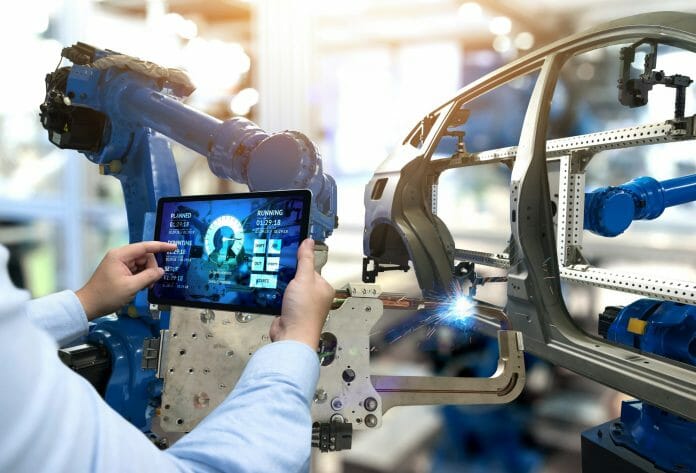By, Vincent Tang the Regional Vice President of Asia EPICOR.
Technology is changing the manufacturing landscape. With data as the driving force, new technologies are paving the way for the rise of smart manufacturing. Smart manufacturing integrates individual work components to create an adaptable, data-rich manufacturing process. The good news is that the shift to smart manufacturing is not all or nothing. Companies can start small and add components gradually as the business grows. To begin the process and ensure that businesses are ready for the future, finding the right technology partner is an essential first step.
The Benefits of Smart Manufacturing
While the benefits of smart manufacturing are vast and growing,automation sits at the top of the list. By minimizing human intervention in the process, manufacturers can maintain product standards, avoid production errors, and improve factory safety.
Smart manufacturing puts company data to work. With insights derived from data, manufacturers can see their shop floors, businesses and supply chains more clearly. They can predict, diagnose, prescribe, and describe the events impacting their operations, and take proactive or corrective action fast. From forecasting demand to defining customers’ payment terms, manufacturers can reduce risk and cost from nearly anything by looking at the data.
Smart factories can self-monitor and self-optimize
Integrated machines and sensors can communicate virtually an unlimited number of data points in real-time. When machines connect and share information, manufacturers can pinpoint the root cause of any event on the shop floor, take a proactive approach to correct potential production errors early before they become major problems. This helps reduce unexpected downtimes and bypass premature or unnecessary maintenance.
The lockdowns due to Covid-19 further highlighted the value of automation in manufacturing. Automation means that workers do not always have to be on-site to be on-the-job. Production can be monitored and controlled remotely using applications and mobile devices. Lastly, with the growing demand for customization, automation can help manufacturers find slots to insert custom orders to maximize profit. By combining efficiency with on-demand technologies like additive manufacturing and 3D printing, make-to-order (MTO) can help shift factories to on-demand part production instead of batch-and-queue processing. Manufacturers are able to keep inventory low, reduce warehousing costs and cut waste.
Technologies that Power Smart Manufacturing
One of the hallmarks of smart manufacturing is the sheer volume of data it puts to work. Here are some of the technologies that enable companies to leverage the power of their data:
- Artificial intelligence (AI) – AI refers to a computer’s ability to perform tasks and make decisions without human intervention.
- Machine learning (ML) – ML allows AI to adapt and improve over time as it gathers more data.
- Augmented reality – Adding graphics, sounds, or text on top of what we already see in the real world, augmented reality allows a worker to use a mobile device for a self-guided tutorial of an unfamiliar machine or work process.
- Digital twins – A digital twin is a virtual copy of a physical object. Sensors from the physical object can feed information into the digital twin and enable the virtual monitoring of physical equipment. For instance, a factory floor worker can monitor a machine by following its digital twin on a mobile device.
- Cobots – These collaborative robots learn new tasks quickly. They are mostly used to complete dull, dirty, or dangerous tasks unsuited for humans.
- Blockchain – This record keeping technology can help improve asset tracking, trade finance, and conduct transaction settlements in manufacturing.
- Cyber-Physical Systems – These are systems where a computer-based program (the “cyber”) interacts with and controls a real-world mechanism (the “physical”).
- Industrial Internet of Things (IIoT) – IIoT is the connection of machines over a network which helps improve output such as energy management, supply chain traceability or predictive maintenance.
- Additive manufacturing – Also known as 3D printing, builds parts and assemblies from digital files. Additive manufacturing was once used primarily for prototyping, but it is gaining traction for custom tooling, custom fixtures, and even custom end-products.
- Enterprise resource planning (ERP) – ERP is essential to smart manufacturing because it is the central location where data is collected, maintained, shared, and made available for use by other systems.
Solarvest Holdings Berhad, a solar solutions specialist in Malaysia was able to reduce operational bottlenecks and mitigate the effects of human error by bringing all the information onto a single platform. With a successful ERP platform deployment, the company is now able to take on more than 100 projects a year as opposed to a previous capability of managing 30 projects a year. With plans to expand geographically and take on more projects across the value chain, a reliable ERP system will play a significant role as the company figures out how to automate more of its operations.
Technological advancements have yielded more responsive manufacturing systems. Individual machines and entire factory floors can self-diagnose, self-correct, and self-improve. With the right technology in place, manufacturers can leverage the power of their data, make informed choices, and prepare for the future, now.









